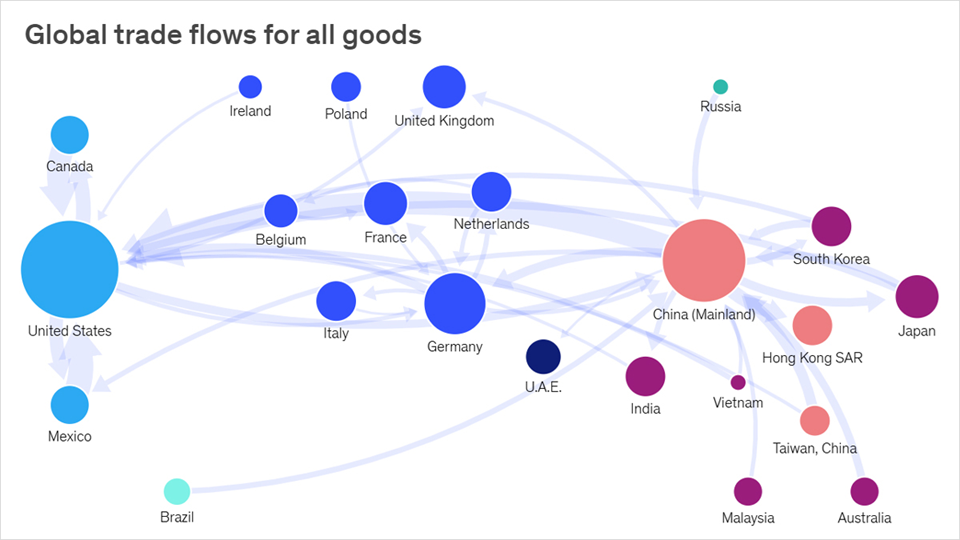Pursuing a structual, sudden change in US trade policy is one thing. That alone is disruptive. Even if it’s a net plus in the longer term (a debatable proposition), the current burden that’s weighing on markets and the economic outlook is a lack of clarity on what the end game is and how the US will get there. It adds up to a one-two gut punch for investor, consumer and business sentiment.
A few days ago it was reasonable to assume that it would suffice if countries offered to reduce some or all tariffs to zero. But White House trade advisor Peter Navarro on Monday said Vietnam’s 0% tariff offer will not suffice: “It’s the nontariff cheating that matters.”
Trump also rejected the European Union’s offer of “zero-for-zero” tariffs with the US for industrial goods. Is that low enough for a deal? “No, it’s not,” Trump said of European Commission President Ursula von der Leyen’s offer. “They’re screwing us on trade,” the President said.
Adding to the uncertainty is the shifting explanations for the logic driving the tariffs. Trump has recently outlined varying reasons for the change in policy, including raising federal funds, protecting US industries, and as a negotiating tool. Some of these goals conflict to a degree and so confusion reigns.

Treasury Secretary Scott Bessent offered what he suggested was a clear line of thinking on the administration’s strategy. Speaking on Sunday, he advised that Trump “has created maximum leverage for himself. And more than 50 countries have approached — have approached the administration about lowering the non-tariff trade barriers and lowering the tariffs and stopping currency manipulation. They’ve been bad actors for a long time and it’s not the kind of thing you can negotiate away in days or weeks.”
Some Republicans are recommending the administration declare a win and accept the European Union’s offer of “zero-for-zero tariffs” on cars and industrial goods. “Let’s take that deal!” Sen. Mike Lee (R-Utah) wrote on X. Sen. Ron Johnson (R-Wis.) is also on board with the idea, writing: “Totally agree with @BasedMikeLee. At some point, you have to take YES for an answer.”
Trump on Monday said “We have many, many countries that are coming to negotiate deals with us. They’re going to be fair deals, and in certain cases, they’re going to be paying substantial tariffs.”
Is this the basis for a deal? No one knows, except for one man.
Perhaps the only clarity is that the longer the uncertainty persists, the bigger the price tag for the economy in terms of damaged sentiment. Recession chatter is rising and that will affect a range of economic activity, from business investment to consumer spending.
“The whole uncertainty around tariffs, all of that hits consumers as well. It hits people in their jobs,” says Elizabeth Crofoot, a senior economist with Lightcast.
BlackRock CEO Larry Fink said that many business leaders think that a significant economic downturn in the US has started. “Most CEOs I talk to would say we are probably in a recession right now,” Fink told the audience on Monday at a meeting of the Economic Club of New York.
Elon Musk, a key Trump adviser, has come out in defense of free trade, and in the process criticized trade adviser Peter Navarro. The public face of a spat on a fundamental vision at the center of trade policy doesn’t inspire confidence that the administration is unified on how to move forward.
The onus is on the Trump administration to state clearly, in public, with one voice, the plan, goal and rules of the game in its tariff policy. That’s a reasonable request if you’re upending the post-war global trading system. The question is whether it will remain a bridge too far?
How is recession risk evolving? Monitor the outlook with a subscription to:
The US Business Cycle Risk Report